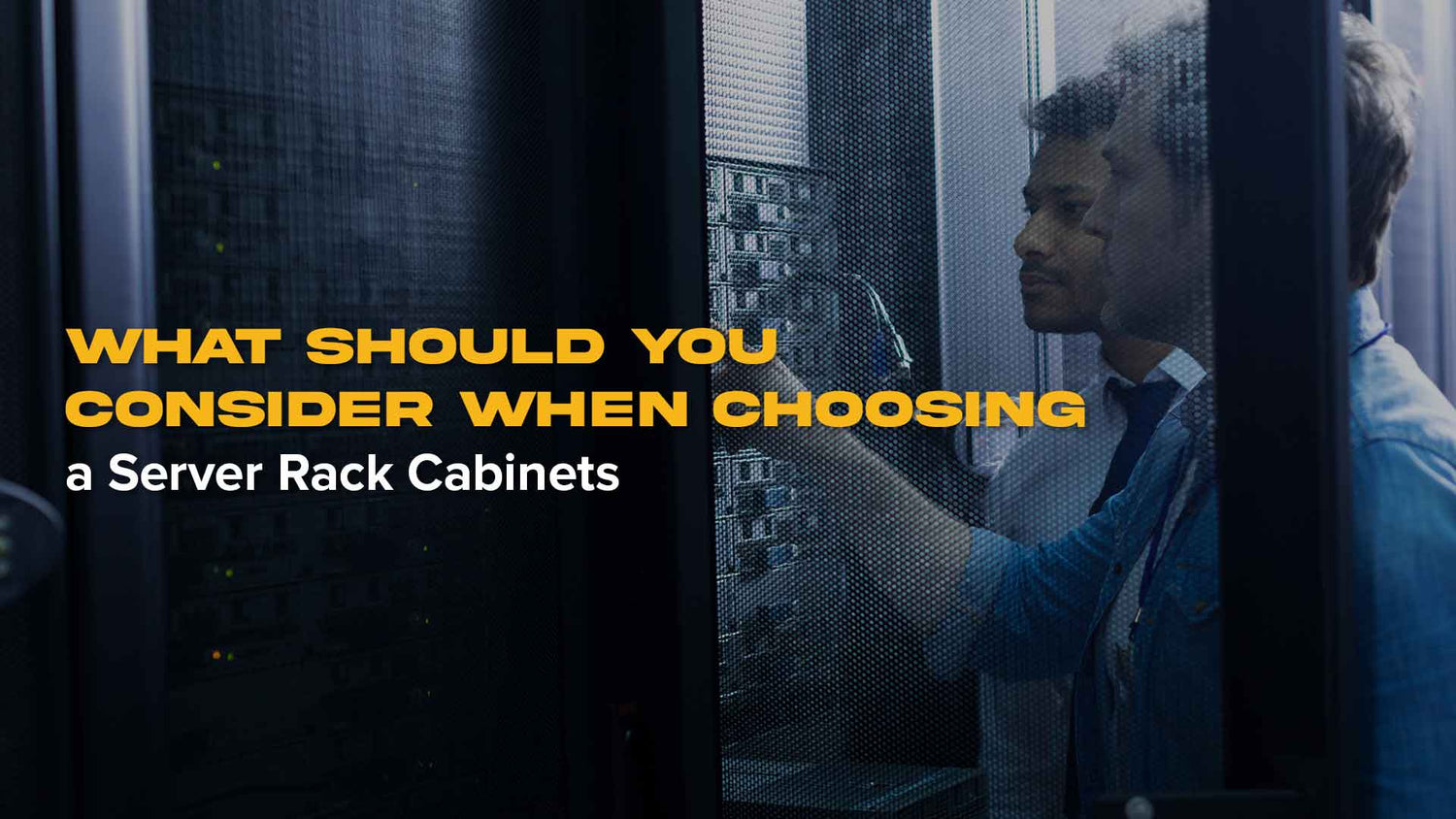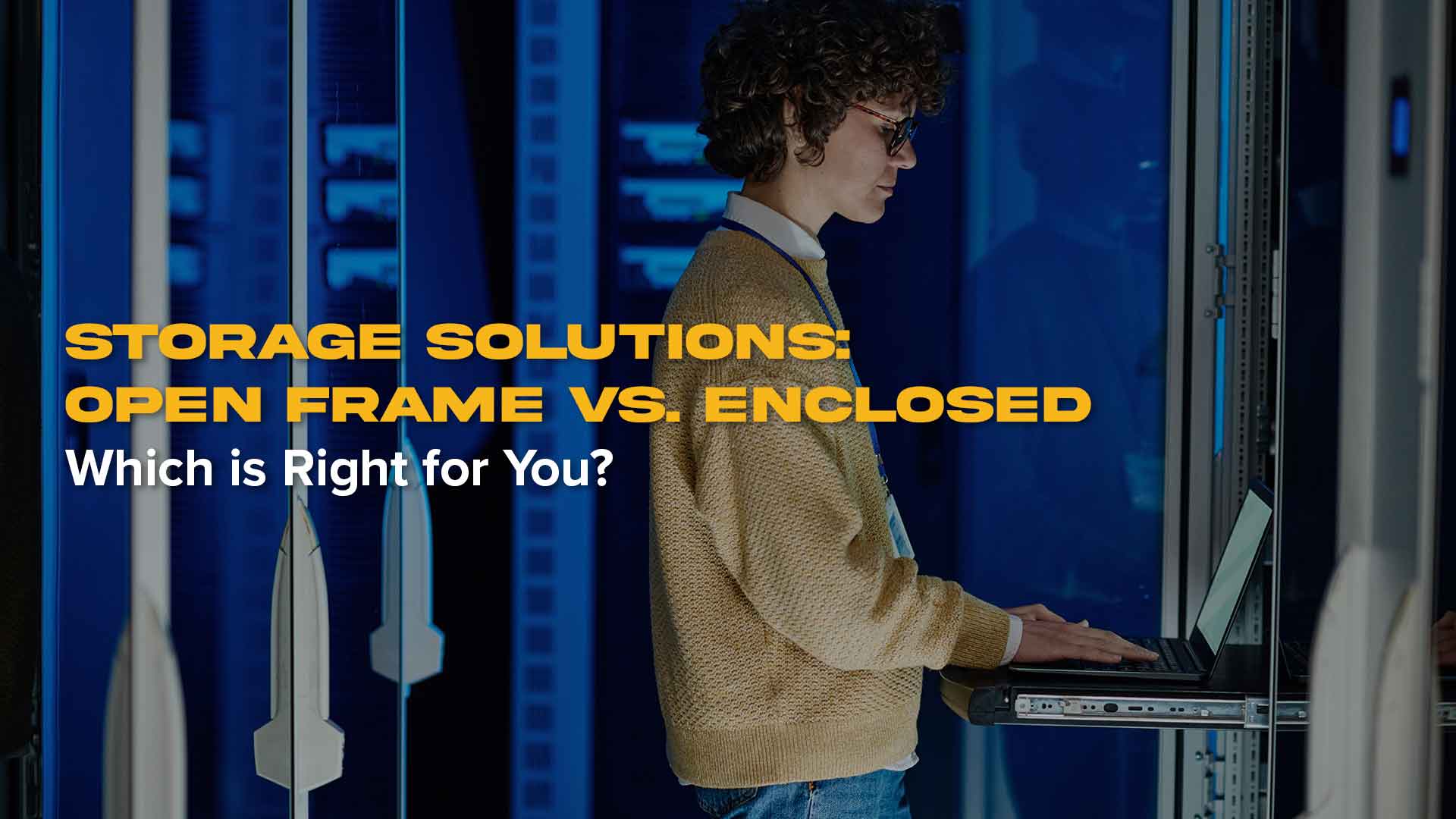As part of IT infrastructure optimization, businesses need to choose a server rack cabinets solution for themselves. With different kinds of server racks—from wall mounts to free standing enclosures, these organizations really have to evaluate numerous factors before purchasing. Industry experts shed light on the salient aspects the buyer must assess to achieve efficiency, security, and scalability in his data center.
Size and Capacity
It is one of the first things to notice when choosing a server rack cabinet: size. Based on the stuff that one plans to put into the server rack cabinet, he must get the required rack unit (U) height, depth, and width. Standard rack units measure 1.75 inches in height; typical rack cabinets range from 4U but could go up to 48U or even much higher. Assess the now as well as the future needs so that space can be preserved.
The other major aspect is the load capacity of the cabinet. Equipment with high densities needs heavy, solid construction to support this load without compromising stability. Buyers should always check the manufacturer's weight rating to make sure that their rack has the ability to handle the hardware they intend to use. Otherwise, structural failure may ensue, and with it, the potential for undue damage to essential ICT components increases.
Rack cabinet footprint is another important factor. Companies that do not have enough space may use a wall mount server rack cabinet; it is one of the most economical ways to house networking equipment without taking up floor space. For large data centers, the integration of the cabinet into existing layouts of server rooms, while providing adequate airflow and cable management throughout, is vital.

Ventilation And Cooling
Proper airflow is the key to ensuring optimal performance and preventing overheating. Server rack cabinets should have perforated doors, built in ventilation, or even thermal fan assemblies for optimal cooling application. Overheating can heavily affect the lifespan and performance of IT equipment, which translates into unexpected downtime and repair costs.
For small office setups, a wall mount server rack cabinet with active cooling features can be the right choice for preventing heat buildup in confined spaces. Other models may include built in cooling fans or exhaust systems to help control temperature, permitting network devices to operate within safe temperature ranges. Proper airflow is critical, especially during times when air conditioning fails to cool enclosed spaces.
The models located in large data centers may choose cabinets with built in cooling solutions, such as liquid cooling or containment strategies of hot aisle/cold aisle. These features work towards the stabilization of temperatures, therefore extending the life of the network equipment. In addition, monitoring systems providing real time temperature measurements allow IT teams to efficiently manage cooling and make adjustments if necessary.
Security Features
Protecting sensitive IT infrastructure is vital for any business. A mount server rack with robust security features will prevent unauthorized access and physical damage. Secured locks at the front and rear doors, side panels, and biometric or Keycard access controls enhance security with many builds. A business dealing with confidential or sensitive data must invest in advanced security features to mitigate possible risks.
For organizations handling critical data, racks with tamper proof enclosures add another layer of protection. Some manufacturers also offer smart monitoring systems that alert the administrator to unauthorized entry or environmental changes within the cabinet. Such alerts would allow IT teams to take swift action against any security threats before they develop into major system breaches or equipment damage.
One key consideration is physically how they are placed. Placing server rack cabinets in secure locations such as locked server rooms or areas where access has been restricted reduces the risk of theft or vandalism. To further guarantee protection, companies may consider installing surveillance systems aimed at monitoring server areas and ensuring that only authorized personnel access critical infrastructure.

Rack Mounting and Accessibility
Rack installation and equipment accessibility seem to play a more significant role in IT teams using a server infrastructure. Mount server rack experts have recommended using adjustable rails or tools without a mount option for simple installation and upkeep. This helps save time and even reduced downtime for IT personnel to be able to quickly install, upgrade, or replace these components without disassembling the entire rack.
Cable management as with other issues comes up with that; a working layout has improved airflow and reduced time spent troubleshooting. Poorly managed cables could restrict areas that are supposed to flow freely, causing overheating and breakdowns. Most server rack cabinets come with integrated cable management, such as vertical and horizontal cables for easy, neat and efficient set up.
For companies that have limited space, wall mount server racks prove to be a compact efficiency solution. Instead, they enable IT teams to space their network components neatly arranged overhead, thus freeing up your precious floor space. Thus, wall mount solutions are future proofed in small offices, retail environments, and spaces where square footage is the biggest concern.
Scalability and Future Expansion
Just as companies grow, the needs change in terms of IT. Future proofing the server rack cabinet leaves room for future upgrades necessary for the organization. When a rack goes with space for extra gear, adjustable shelves, and expansion capabilities, the company can scale its infrastructure without replacing what already exists.
Without the need for a complete overhaul of the server infrastructure, adjustable rails, modular designs, and expansion ready enclosures enable companies to scale up. IT professionals recommend purchasing racks that provide room for additional network switches, patch panels, or cooling systems to adjust to the future expansion plans. Investment in scalable asset solutions saves businesses the expense of an upgrade later and avoids potential associated costs.
Another significant factor is power distribution. Server rack cabinets ready for future use must accept advanced power distribution units (PDUs) and uninterruptible power supply (UPS) systems. These are the guarantees that an expanding corporate IT venture will not find its power usage exceeded or left in a failed state due to unexpected outages.
Compliance and Industry Standards
Sticking with industry standards when choosing a server rack cabinet is of the utmost importance. Organizations should look for racks conforming to EIA 310 standards, whose primary purpose is to ensure compatibility between different types of IT equipment. Thus, adherence to these standards allows organizations to mix and match brands with no compatibility issues.
Also, companies in regulated industries may need cabinets that meet security and environmental certifications, such as HIPAA or ISO compliance. These certifications ensure that the IT infrastructure meets specific security and environmental regulations pertinent to the industry. Data centers that deal with financial or medical information are held under stiff compliance standards to guarantee that customer data remains confidential.
In addition to fire safety, environmental considerations must be taken into account. Some server rack cabinets may have fire rating or environmental sealing options to protect critical infrastructure from external attacks. The safety and environmental compliance means no fines for the organization, operational efficiency to enhance, and security level improvements going forward.

Cost Considerations
Even at the cost of efficiency in the selection of server rack cabinets for the most important concern: price is the deciding factor, experts suggested the opposite. Buying a premium product with durable construction, extra security, and cooling abilities even for the short term means saving some lump sum at the time of replacement and maintenance. It is only advisable to go low priced if practical warranties are met, extraordinary prices would ramp up when it comes to limited efficiency, heat or security issues.
One ought to compare the various models and check the customer reviews, not forgetting the consultation with industry experts. Evaluating long term factors like energy efficiency, scalability, and security is crucial and should provide businesses with tour guiding perspective in their servers' rack procurement decisions. Planned investment in server rack cabinets means that businesses have reliable IT infrastructure. It all seems to be conducive to choosing, like the matter of warranty and customer service. Good manufacturers provide excellent warranties and customer service to assist businesses when they experience technical problems. If a vendor is known for offering great quality, businesses benefit accordingly, as they get help whenever they need it.
Choosing the best server rack cabinets requires great care, taking into account many things, especially size, security, cooling, and scalability. Servers come in a variety of types, so businesses can choose the best solution for their unique needs. A well thought out business investment ensures efficiency, security, and ease of migration, while staying ahead of new technological advances that hinder the process with various limitations.
Frequently Asked Questions (FAQ)
- What to Consider When Selecting a Server Rack Cabinet?
Start by determining the size and weight requirements of the chosen server rack cabinet based on your equipment and future expansion needs. Cooling options, security features, cable management, and scaling are important to consider when assessing the cabinet for its long term needs.
- Why is Ventilation and Cooling So Important?
Heat generates improper airflow and insufficiency of proper cooling affects the life and working of the equipment. Poor cooling can lead to data loss and expensive repairs. In wall mounted racks, small coolers can be used for cooling, while large data centers might want to handle cooling using advanced cooling systems like liquid cooling or aisle containment systems.
- How Do I Ensure My Server Rack Is Safe?
Physical security protects your infrastructure. Look for some locking mechanism that is sturdy, biometric access controls, and alarm systems. Keep racks in secure, restricted areas and encapsulate some basic site surveillance systems to the added protection of sensitive IT equipment from being stolen or damaged.
- Why is cable management important?
Good cable management ensures airborne circulation and helps to reduce troubleshooting hours. Improperly arranged wires will block airflow and thus lead to issues like overheating and system failures. Most server racks generally come with integrated cable management setups for neat and efficient installation.
- How Can I Modify My Server Rack For Scaling Up?
Choose server racks in such a way that they are modular in design, adjustable for space provisions, and expansion capable. It will allow adding more equipment, like the network switch or cooler, without necessitating a new rack purchase. In addition, make sure the type of rack supports load PDUs and UPSs for future expansion needs.




Leave a comment
This site is protected by hCaptcha and the hCaptcha Privacy Policy and Terms of Service apply.